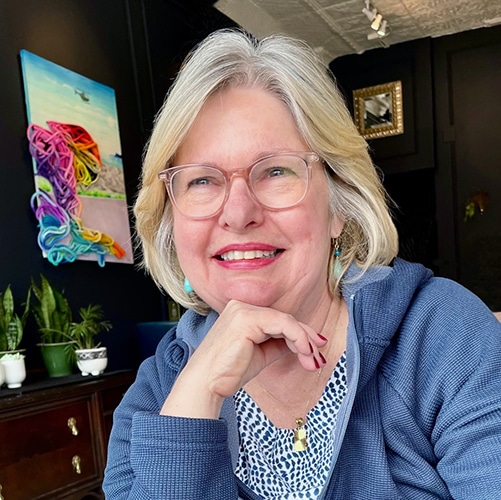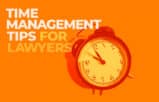I deal in “clouds and dirt.” That’s how Gary Vaynerchuk (entrepreneur, angel investor, four-time New York Times best seller, and digital marketing agency CEO) began the closing keynote to the capacity crowd at this week’s Clio Cloud Conference in Chicago.
And the metaphor of “clouds and dirt” is a pretty good way to describe the Silicon Valley inspired, high-energy ClioCon, which delivers sessions that motivate lawyers to reach far beyond the status quo in their businesses, alongside sessions that dig deep into using technology to actually work on big ideas.
So, sticking with “clouds and dirt,” here are five motivating things I (and the 800 other attendees) learned at the conference, along with a few tips to add to your action plan.
1. How much should I charge? Are my rates too low? Too high? What’s her hourly rate? In its new “Legal Trends Report,” Clio wants to answer one of the most common pain points for a lawyer: how much to charge? Analyzing aggregate, anonymized data collected from some 40,000 registered Clio users in the U.S., the report reveals average hourly rates by state and by practice area; breaks down fee structures (hourly, flat fee and contingency) by practice area; and tracks seasonality, measuring numbers of active matters by practice area per month. Expect some surprises in utilization rates, state to state, and firm size comparisons. (What’s up in Iowa?) Game changer: Clio says this is the first time such a study has analyzed raw user data, versus self-reported survey data, which are subject to a desirability bias. As Clio’s vice president of business development, George Psiharis, said, actual data will challenge your perceptions of reality. “Sometimes your intuition doesn’t add up.”
Action step: Challenge your assumptions and analyze your own metrics — hours billed, utilization, realization, collections, matters per month — and compare them with your peers’ when the report is released on October 17. To pre-register for the report, sign up here.
2. There’s a bot for that. Robots are already among us, Ed Walters reminded us in his session, “The Law of Robots.” Artificial intelligence? Already here. It’s just that once we get used to something, we tend to stop labeling it. In session after session, tech experts and entrepreneurs pointed to a flood of tools that can automate simple steps to make you much more efficient. Even better, they can improve the quality of your work. For example, Mary Redzic (“Three Reasons to Be Excited About the Future of Tech”) pointed to tools like Casetext, Ravel Law and Lex Machina to help find better quality information, and document automation tools to minimize mistakes. On the research front, Casetext’s new Cara app will review your brief and suggest cases you might have missed, while Fastcase’s Bad Law Bot uses algorithms to flag and provide links to cases that have negative citation history.
Tip: Don’t overlook sources for ready-made templates, such as Legal Zoom, Rocket Lawyer, Docracy.com, LegalTemplates.net and legal organizations like ACC. According to Redzic, some lawyers send clients to sites like Legal Zoom and build business around reviewing the final documents.
In “How to Be a Tech Savvy Lawyer,” Alt Legal’s Nehal Madhani pointed to API technology, which allows separate applications to work together, saving time and reducing the number of windows you need to open. For example, Zapier uses “ifthisthenthat” (also known as “IFTTT”) technology to help move information from one platform to another. It can be the glue between your email program and your practice management program, automatically placing emails in the appropriate client matter. “If the Weather app says it will rain, you can program Zapier to send a text telling you to take an umbrella.”
Action step: Take Madhani’s advice and map out the steps for each transaction in your practice. Look for repetitive tasks that are ripe for automation.
3. You are a media company, first. We are living through the greatest communications shift in history, claimed Gary Vaynerchuk, and an even bigger tidal wave is coming. Yet, nobody believes it is going to happen to them. It’s happening across all industries, he told the crowd, but in law, lawyers hide behind [advertising] regulations. “The good news is that the cost of entry is still relatively cheap: knowledge and hard work.” The bad news? No middle ground: “Over the next 10 years, you either land grab or you fail.” And while it’s certain the media landscape as we know it will change, if you don’t start using the tools your clients are using now, it is going to get harder to catch up later on. (How many lawyers use Facebook every day but would never think to use it for marketing their firm?)
This is a marathon, cautioned Vaynerchuk, and it could take years to pay off. But you need to get on the treadmill now.
So how do you make the shift to a media company mindset? Understand your “value proposition” and get it out there in text, video, podcast, and on social media. Because before you can tell someone how good you are and why they should hire you, you need to get their attention. “Content,” says Vaynerchuk, “is the gateway drug.”
Action plan: One frustrated audience member drew applause as she rattled off the litany of urgent content marketing, SEO and social media “must-do” advice bombarding lawyers daily. So what’s one concrete thing you should do now, according to Gary Vee? “You need to understand how Facebook works; it’s oxygen.” (Do not delegate this to your nephew.) Google “how do I run Facebook ads” or “how to create legal content for Facebook.” Study and experiment, spend real time and money, and see what happens.
4. Extreme video marketing. Speaking of media attention, Bryan Wilson told the story behind creating the “Texas Law Hawk” video that grabbed 1.7 plus million YouTube views (so far) — and an invite to collaborate with Taco Bell on a Superbowl ad.
Have the videos actually brought in clients? You bet, said Bryan, who practices criminal law and uses the videos to educate the public about their rights. Going viral isn’t a guarantee your practice will boom, of course. Only a tiny percentage of the calls you receive will be legitimate (and you’ll need a thick skin to deal with the comments). Attention from local media, and subsequent interviews, though, can turn to gold.
Tip: Timing is everything if you want to reach the YouTube generation (Bryan does well around the holidays). Also, to avoid the need for advertising review by the state bar, keep your video purely educational (with no call to action to hire you). After his very first video’s take-down notice, Bryan’s spent a lot of time working out what is and isn’t allowed (and is now on a first-name basis with his bar’s ad review department). You’ll want to check your own state bar’s advertising rules.
Action step: Watch Bryan’s videos at the Texas Law Hawk’s YouTube Channel and stay tuned for his next video this Christmas. Crazy? Like a fox … er … hawk.
5. Build your life, not just your firm. At his session “How to Practice Law from India (with a Four-Month-Old),” Greg McLawsen shared the nuts and bolts of how he’s automated his web-based firm, Sound Immigration, along with inspiring photos of his travels to India with his wife and that adorable four-month-old son. The tools — Slack and Trello for team communication, collaboration and project management: Zapier (“Duct Tape for the cloud”); Clio for practice management; Ruby for calls; Lexicata for leads; and Earth Class Mail, as well as outsourcing to an LPO in India — support his appetite for adventure. The real take-away, though, was Greg’s courage to examine what he wanted from his life and law practice, and to act on it. As a new solo, Greg says, “I began to feel I was not in control of my own time or my own life.” So, Greg and his wife sold their big dream house and moved in with his mom to save cash while reshaping his start-up law practice around the values most important to him. Today, the firm has five offices in Washington state and serves clients around the world. “We get so caught up in the day to day that we forget that what we’re choosing is the rest of our lives,” said Greg.
Action step: This is a big one … what will you choose?
Buckle Up for Futures Week
Last week at the 2016 Futures Conference in Kansas City, the College of Law Practice Management asked the question “What will law look like in 2026?” We invited speakers Jordan Furlong, Nathaniel Slavin, Sharon Nelson and Reid Trautz, among others, to fill us in. Watch for “Futures Week,” starting Monday.
Illustration ©iStockPhoto.com























